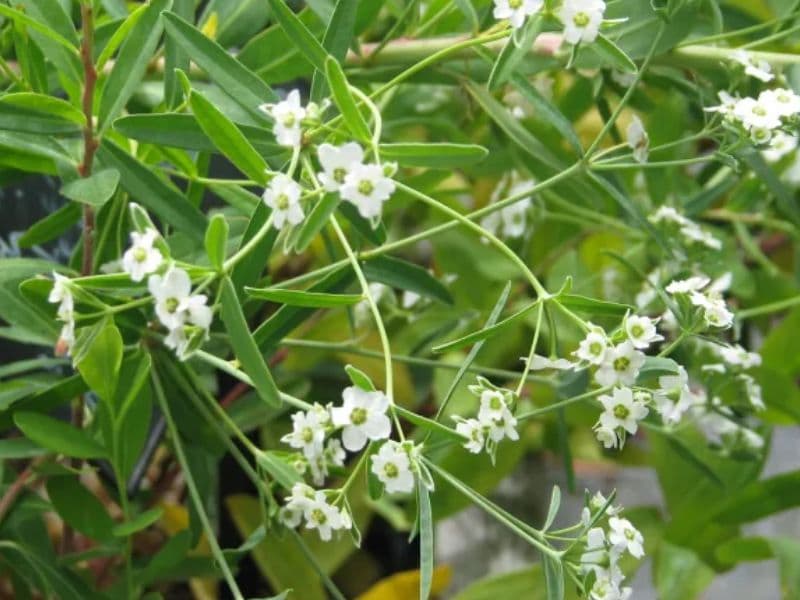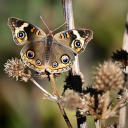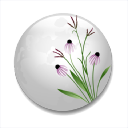Flowering Spurge (Euphorbia corollata), also known by names like Eastern Flowering Spurge, Poison Milkweed, Tramp’s Spurge, and Wild Spurge, is a hardy perennial native to southeastern Canada and much of the central and eastern United States. Belonging to the Euphorbiaceae family, this native plant thrives in hardiness zones 4 through 8 and is often found in prairies, fields, forests, and along roadsides.
Recognized for its delicate, white, green-centered flowers, Flowering Spurge is sometimes referred to as the “baby’s breath of the prairie.” Its blooms, appearing from early to late summer, are a favorite among pollinators, especially bees. This low-maintenance plant can add charm to naturalized settings or native plant gardens if provided with the right growing conditions.
| Common name | Flowering Spurge, Eastern Flowering Spurge, Poison Milkweed, Tramp’s Spurge, White-flowered Milkweed, Wild Hippo, Wild Spurge |
| Botanical name | Euphorbia corollata |
| Family | Euphorbiaceae |
| Species | corollata |
| Origin | South East Canada to Central & Eastern U.S.A |
| Life cycle | Perennial |
| Plant type | Native Plant |
| Hardiness zone | 4, 5, 6, 7, 8 |
| Sunlight | Full Sun |
| Maintenance | Low |
| Soil condition | Clay |
| Drainage | Well-Drained |
| Harvest time | Fall |
| Flowering period | Fall |
| Height | 1 ft. – 2 ft. |
| Flower color | White |
| Leaf color | Green |
| Fruit color | Green |
| Stem color | Green |
| Fruit type | Capsule |
| Leaf benefit | Showy |
| Flower benefit | Long Bloom Season |
| Garden style | Drought Tolerant Garden |
| Uses | Meadow |
I. Appearance and Characteristics
Euphorbia corollata is an herbaceous perennial plant in the family Euphorbiaceae. Flowering spurge is native from Texas north to South Dakota and east to the Atlantic coast.
A common name for the species is flowering spurge. It has a milky sap that can cause skin and eye irritation in some people.
It grows up to 1 m (3 ft) tall, with smooth stems and light green leaves arranged alternately or in whorls. Leaves are about 10 mm (1/2 in) wide and 75 mm (3 in) long. Each stem terminates in a panicle 20 to 25 mm (3/4 to 1 in) across. Flowers are about 6 mm (1/4 in) across and consist of one pistillate and several staminate flowers surrounded by five white bracts – not petals but formed from the involucre at the base of the flowers. Flowering spurge blooms from June to September.

Flowering spurge grows in most soil types as long as they are well-drained. It is usually found in prairies, pastures, glades, and along roads and train tracks. It has excellent drought tolerance and develops a deep taproot. It is difficult to transplant once established.
The flowers are pollinated by a variety of insects including bees, wasps, flies, and butterflies. Other insects feed on foliage, stems, and other parts of the plant, although mammals avoid it because of its toxic sap. Seeds are fed on by wild turkey, greater prairie chicken, bobwhite quail, mourning dove, and horned lark.
II. How to Grow and Care
Sunlight
Flowering Spurge thrives in conditions receiving full sun, where the intensity best promotes its growth and contributes to a healthy bloom. While flowering Spurge is well-suited to bask in ample sunlight throughout the day, it possesses an admirable tolerance for partial sun, adapting to slightly less intense light without significant detriment to its vigor. However, prolonged exposure beyond these parameters, especially to dimmer conditions, could impair its growth and flowering capabilities.
Outdoor cultivation should prioritize sunny spots, as flowering Spurge is not commonly grown indoors. Its light-responsive traits may include adjusting leaf orientation to capture the optimal light, ensuring it maximizes its photosynthetic efficiency and health.
Temperature
Genus Euphorbia is very large and diverse, so its different species can be found in various habitats, but the majority are well-adapted to a temperature range of -29 to 4 ℃. Many spurges, in spite of having succulent leaves, cannot handle long periods without moisture and need to be watered weekly during hot summer days. Some cactus-like species are well adapted to high temperatures and prolonged dry periods, but most species used for landscaping and decorative gardening require more moisture for proper development.
Watering

Originating from well-drained soils in open fields, flowering Spurge thrives with consistent moisture yet displays a notable resilience to periodic dry spells. It is accustomed to the balance of wet and dry cycles, preferring a stable environment that mimics its native conditions.
Watering should occur once every week to maintain this equilibrium. As an outdoor plant often found in temperate regions, flowering Spurge enters a dormant phase during which water requirements diminish significantly, aligning with the seasonal rainfall patterns of its habitat.
Soil
Spurges aren’t picky when it comes to soil type. They can grow in a variety of soils. Some species of Euphorbia can even thrive in nutrient-poor soils, requiring only that the soil be well drained. If the soil is full of moisture and is prone to water retention, it will most likely cause root rot.
Fertilizing
For optimal growth, flowering Spurge benefits from a balanced fertilizer, applied monthly during active growing seasons, spring through summer. This steady nutrition encourages robust root systems, lush foliage, and vibrant blossoms while bolstering plant resilience. A lighter application is prudent as excessive feeding can harm flowering Spurge.
During its dormant winter phase, cease fertilizing to avoid stressing the plant. Adjust the quantity respecting plant size and pot volume to ensure flowering Spurge’s health and flowering prowess without over-fertilization risks.
Planting Instructions

Dig a hole twice as wide as the plant’s root ball before planting. Then, turn the container with flowering Spurge upside down and let the plant slowly fall into your hands. Place the plant upright in the hole and slowly fill in around the roots with loose and fertile potting mixture, adjusting the planting depth until it is just right. Water it once. Do not overwater, as standing water is not good for the plant.
Pruning
In early spring, if there are any damaged stems, they need to be removed to keep the plants healthy and to optimize their nutrient management. It is advised to cut back a certain number of stems after blooming in order to stimulate consistent flowering and growth of new foliage. When cutting a stem, cut at the stem’s base. It is very important to use gloves while handling and pruning flowering Spurge, because their tissues contain milky-white latex sap which is poisonous and can irritate the skin.
Propagation
Flowering Spurge can be successfully grown from seeds, but the seeds are rarely commercially available because they are difficult to germinate and stay viable only for a short period of time. Flowering Spurge is most commonly propagated via cuttings.
It is important to wear gloves while working with flowering Spurge cuttings and to clean the pruning shears thoroughly after pruning, so that any unwanted contact with the sap is avoided. Before planting, it is necessary to leave the cuttings to dry for 2-3 days. This will prevent rot from developing and enable proper formation of the callus tissue. It is advised to plant the cuttings in a soilless medium, such as peat moss, because it provides an optimal environment for proper root development.

Cuttings should be misted regularly, and the pots in which they are planted need to be wrapped in either foil or a plastic bag to preserve moisture. The bag or foil needs to be removed for two hours each day to provide sufficient air and to prevent excess moisture in the medium. If this step is skipped, molds and rots can easily develop and damage the health of the young, sensitive cuttings. When the cuttings develop a root system, they are ready to be transplanted into soil.
III. Uses and Benefits
The plant can be used as a laxative, but is poisonous if eaten in quantity.
IV. Harvesting and Storage
Some species of Euphorbia can be cut for fresh flowers or foliage, such as snow-on-the-mountain (Euphorbia marginata), Euphorbia fulgens and Euphorbiaformosana. When harvesting cuttings, remember to wear gloves, as the sap can be irritating to the skin. It can be cut from the base of the stem. Soak the end of the cutting in hot water for 10 seconds to stop the milky sap from oozing. The vase life for the cutting will be about 5-7 days, and some flower food can extend its life.

When the fruits of Euphorbia plants are ripe, they burst and scatter the seeds over a large surface area. In order to harvest all the seeds, the individual fruits or the entire plant must be wrapped in in nylon, gauze, or similar material before the ripe fruit bursts and releases the seeds.
Find Where to Buy the Best Flowering Spurge (Euphorbia corollata)

















Leave a Reply